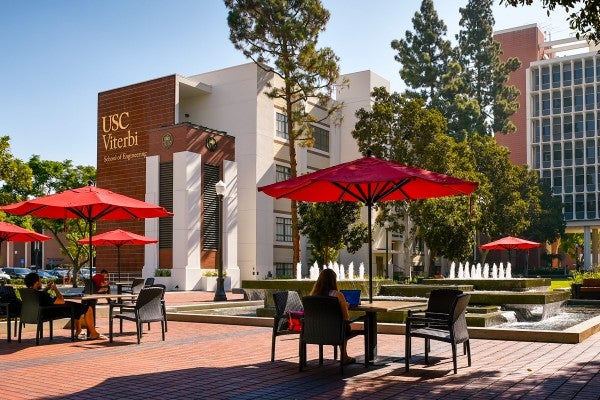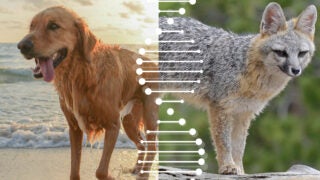USC Annenberg, Viterbi schools form unique partnership
Two new programs will give students a mix of communications and technological skills and find new ways to deliver news
Two USC schools are teaming up in a transformative, interdisciplinary partnership to launch programs that will shape communication and technology professionals, combining the strengths of their fields for the 21st century.
The first two initiatives of this new partnership by the USC Annenberg School for Communication and Journalism and the USC Viterbi School of Engineering are:
- A new Master of Communication Informatics degree from USC Annenberg and USC Viterbi that explores the most interesting technological phenomena impacting communication of the future, including “big data” and data analytics, virtual and augmented reality, data mining, crowdsourcing, online communities, social media and the use of technology in journalism. Graduates will emerge with fluencies in data, communication and media technologies and with a focus on applications that address real-world problems.
- The creation of innovation teams, as part of the new Annenberg Leadership Initiative, to pioneer new digital storytelling tools and methods of delivering news. Led by faculty at USC Viterbi and USC Annenberg, these teams of student engineers and journalists will work in the Julie Chen/Leslie Moonves and CBS Media Center at Wallis Annenberg Hall. The teams and Leadership Initiative are funded by a portion of a $5 million gift from the Annenberg Foundation.
The USC Annenberg-Viterbi partnership embodies the schools’ shared commitment to harnessing technology for the good of society and a passion for contributing to a diverse, dynamic talent pool for the industries they serve.
“We celebrate this new, powerhouse partnership and everything it will bring to both schools and our graduates,” said USC Annenberg Dean Ernest J. Wilson III. “We’re building in the space where these fields naturally converge. Engineers and communicators who can work in both worlds will be uniquely qualified to solve real-world problems of the 21st century.”
USC Viterbi Dean Yannis C. Yortsos said: “We look at engineering and computer science as the empowering disciplines of our times, driving convergence between the sciences, the professions and the arts. In our rapidly changing world, professionals in both engineering and communications need skills from both sides; they need to learn each other’s languages.
“And the moment you have graduates with a command of both areas, you are creating some incredibly powerful individuals who know how to solve real-world challenges. This is another manifestation of our guiding concept of Engineering+.”
Master of Communication Informatics degree
The goal of the Master of Communication Informatics degree is to create communication professionals who are familiar with technical applications, mining data and parsing data sets — professionals who can use technical resources to investigate and find solutions. They will understand the engineering of communication, including the design and construction of mobile apps, online networks and social media tools.

The program will also build engineering professionals who have a better understanding of how technologies interact with and engage the public, as well as support communications.
No matter their specialty, graduates will understand how the fields of communication and technology inform each other and contribute to each other’s successes.
Innovation teams
Supported by the Annenberg Foundation, the Leadership Initiative will give journalism and communication students the opportunity to work alongside student engineers. Led by expert faculty, the students will join forces on innovation teams in the Media Center to leverage digital technologies, broaden the reach of contemporary journalism and deepen engagement with a diverse range of audiences.
As technologies drive changes in media, young journalists and technologists will work together to improve access to news and information, said Willow Bay, director of the USC Annenberg School of Journalism.
“More than the new tools they may create or new audiences they will reach, the students themselves will model the kind of interdisciplinary communication and collaboration that is imperative to success in the 21st century,” Bay said.
The innovation teams will have full access to the technology of USC Annenberg’s Media Center, a 20,000-square-foot facility with multipurpose television, radio and direct-to-Web broadcast studios that allow students to stream professional-quality programming to any medium. The unique environment — a newsroom, classroom and incubator — will serve as the workspace for the development of tools and products that will help propel the journalism of the future, Bay said.
The Annenberg Foundation’s gift supports the Campaign for USC, a multiyear effort that seeks to raise $6 billion or more in private philanthropy to advance USC’s academic priorities and expand its positive impact on the community and world. Four years after its launch, the campaign has raised more than $4.7 billion.



